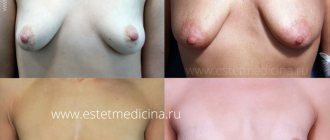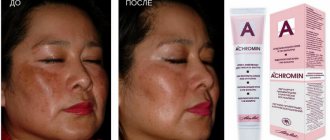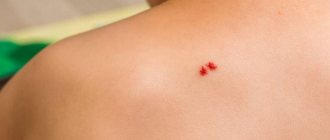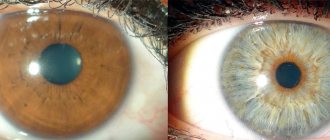Redness on the skin is a very unpleasant phenomenon for both adults and children. As a rule, they cause itching and flaking, which are sometimes accompanied by painful sensations. In addition, in each case, red spots look aesthetically unpleasant and repulsive. It is not surprising that every person strives to get rid of them as quickly as possible. And to do this, first of all, you need to understand the reasons for their occurrence, which can be very different. Moreover, sometimes redness on the skin indicates a very serious disease, including internal organs.
COST OF DERMATOLOGIST SERVICES IN OUR CLINIC IN ST. PETERSBURG
| Dermoscopy price | from 200 rub. |
| Dermatologist appointment | 1000 rub. |
| General blood analysis | from 160 rub. |
| Call free: 8-800-707-1560 *The clinic is licensed to provide urological services | |
What are the most common causes of red spots on the skin?
Allergic reaction
The content of the article
Taking certain medications, as well as consuming a number of vitamins and foods, interacting with pets, getting bacteria or dust mites on the skin, inhaling pollen from flowering plants, etc., can trigger an allergic reaction. Most often, it manifests itself in the appearance of red spots scattered over the body and causing severe itching, which in particularly difficult cases can lead to Quincke's edema and even death.
In such a case, you will need to consult a dermatologist, who will identify the cause of the allergy and prescribe appropriate treatment. Eliminating provoking factors, using histamine blockers and local ointments will allow you to quickly forget about the problem and avoid complications.
What dangers do port-wine stains pose?
Port-wine stains, especially those on the face, certainly lead primarily to psychological and social difficulties. A child with such an education develops low self-esteem, and in the future he may experience serious problems in communication. It is more difficult for a person with a wine stain on his face to arrange his personal life, find a well-paid job and advance in his career.
Meanwhile, port-wine stains are not as innocent as they seem; they can be very dangerous:
- If the spot is located on the temple, forehead or eyelids, it can trigger the development of glaucoma (a disease of high eye pressure). In this case, there is a high risk of complete loss of vision;
- Sometimes the skin in the area of the spots can become much thicker and thereby make it difficult to move the joints of the arms and legs, and if the spot is on the cheek, even interfere with chewing food;
- With age, the surface of port-wine stains becomes uneven, and dark red nodules appear on it, consisting of dilated vessels - angiomas. They are easily injured, bleed and heal poorly;
- Sometimes port-wine stains indicate the presence of certain genetic diseases that require attention and appropriate treatment.
Presence of an infectious or venereal disease
The “culprit” of red spots is often the viruses of scarlet fever, rubella, measles, chickenpox and other infectious diseases. This also includes the disease syphilis, which manifests itself as red rashes on the skin.
The danger of such diseases is that a person not only experiences discomfort (the appearance of a red rash all over the body in these cases is usually accompanied by fever, chills and other unpleasant symptoms), but also turns into a carrier of the virus. Therefore, at the first signs of an infectious or sexually transmitted disease, accompanied by redness on the skin, you need to consult a doctor and begin comprehensive treatment, including taking antibiotics, antihistamines, vitamins, topical ointments - this is the only way to protect others and quickly cope with the disease.
How to get rid of wine stains?
Until quite recently, port-wine stains were either not treated, or doctors resorted to surgery (skin grafting) - a very traumatic and dangerous procedure, since if the stain was tumorous in nature, its remaining cells could transform into malignant ones.
It is important to understand that several forms of nevus of the most diverse origin can exist on the skin of the same person. If you were manipulated to remove one port-wine stain, then other formations on the body may have a different origin; they should be studied separately.
When contacting about a nevus formation, the diagnostic process begins with an examination. The doctor records the size of the spot, its shape, accurately describes the location of port-wine stains, the participation of hair follicles in the process, and much more. If difficulties arise in diagnosis, a number of additional studies are carried out.
Dermatological problems
The most common dermatological disease, characterized by the appearance of red spots - they are located locally or throughout the body - lichen. Experts distinguish several types of lichen, each of which has its own characteristics.
Red flat and ringing, scaly (psoriasis) and shingles, pityriasis and weeping (eczema) - all of them require the mandatory intervention of a specialist who can make a correct diagnosis and timely prescribe therapeutic measures. In addition, some types of lichen are transmitted by contact, which requires isolation of the patient from others, compliance with a special lifestyle, and exclusion of provoking factors.
Pathologies of the cardiovascular system and the consequences of frequent or constant stress and nervous tension.
The human body is a complex system in which everything is interconnected. Therefore, you shouldn’t be surprised if one of the consequences of nervous overstrain is redness of the skin (it’s not for nothing that people came up with the expression: “stains from nerves”). The reason for this phenomenon most often lies in vegetative-vascular dystonia, leading to impaired blood flow.
Redness of the skin will most likely not cause any pain and will go away on its own in a couple of days. However, you need to remember that quite serious diseases of internal organs can also lead to the appearance of spots: the cardiovascular system, gastrointestinal tract, etc. Therefore, any change in the skin should be a reason to contact a skin specialist.
Methods for treating port-wine stains
In the past, methods such as radiotherapy, cryotherapy and sclerotherapy were used to treat port-wine stains. Not only did they not produce results, but they also left scars.
Laser therapy is the most effective way to treat this skin pathology. The Altermed clinic uses the latest developments in medical technology, based on the principle of selective exposure of the laser beam to blood vessels. As a result, the surrounding tissues around the spot remain intact, there is no risk of scars, burns or other complications, and the skin in the area of the nevus acquires a normal color.
To completely get rid of a wine stain, several procedures are necessary. The result depends on its size: the larger the spot, the lower the percentage of effectiveness, i.e. the skin just brightens. Meanwhile, during the session, tissue nutrition, blood microcirculation improves, and oxygen saturation increases. It is especially worth noting that, as scientific and clinical studies have confirmed, the number of complications and treatment time using laser light are reduced by 30%.
If you are faced with such an unpleasant problem as port-wine stains, you should not delay, because the sooner you start treatment, the more effective it will be. At the Altermed clinic we will help resolve this issue as quickly and efficiently as possible: highly qualified specialists using the latest medical equipment work real miracles!
What will an examination with a dermatologist give?
Since there are a great many causes of skin redness, it is not recommended to “remove” and treat them on your own. And here it doesn’t matter whether we are talking about small rashes scattered throughout or locally located large spots. Flaky and itchy or not causing much concern.
Only an experienced dermatologist will be able to determine the disease, sometimes by the nature and location of the redness. But even in this case, he will definitely prescribe a comprehensive examination, including analysis of scrapings from the affected areas of the skin, which will allow timely clarification of symptoms, the correct selection of treatment therapy, and possibly diagnosis of a very serious disease, which at first glance has nothing to do with the condition of the skin. covers.
RESULTS OF THE PROCEDURES
Adult skin hemangiomas, port-wine stains, and angiomas may require one to several treatments to remove. The positive effect will be noticeable after the first one. All removal methods are safe for health.
As a result, the patient receives:
- Clean, smooth skin.
- No relapse, subject to doctor's recommendations and quality of life.
To avoid possible negative consequences, we recommend not to delay solving the problem and contact our specialists as soon as possible.
How to deal with itchy skin
But what if a dry spot on the skin itches, but you can’t go to the doctor in the near future? In this case, you can alleviate the condition with the help of antihistamines, most of which are sold in pharmacies without a prescription. Try not to scratch the spots; it is better to lubricate the affected areas with anti-itch gel so as not to aggravate the situation. And, of course, do not neglect visiting a doctor. It is also necessary to review your diet and eliminate foods that provoke allergic reactions. In winter, it is necessary to ensure that the air in the room is not too dry. In summer, do not stay in direct sunlight for long periods of time.
Dry red patches on the skin
Almost all of us have encountered the phenomenon of dry red spots on the skin. They can occur when the body is exposed to irritating factors, in other words, allergens. It is allergens that in most cases provoke negative skin reactions, red rashes, often forming large areas of allergic damage. These rashes are characterized by itching and irritation.
Red spots that suddenly appear on the skin are characteristic symptoms of developing psoriasis. This disease is extremely difficult to treat. Consultation with a dermatologist is required. In some cases, stable remission can be achieved by following a special diet; long-term complex therapy under the supervision of a specialist is required.
Causes of the rash
If a small spot does not go away for several days or increases in size and turns red, you need to monitor the accompanying symptoms. Often, a stain indicates the appearance of pathogenic microbes in the body, that is, the development of a fungal infection. In addition, redness sometimes indicates an allergic reaction to food, medicines, pollen, animals or household chemicals. Endocrine and autoimmune diseases, as well as infectious damage to the body, are often accompanied by spots on the body.
Depending on the state of the immune system and the characteristics of the body, the symptoms of pathology can be pronounced or mild. You need to pay attention not only to changes in skin tone, but also to your well-being. Perhaps the spots will peel off, itch, swell, become covered with plaque or become wet. With rashes on the head, hair may fall out or break off, and yellow dandruff often appears. The itching can intensify to such an extent that a person's sleep at night is disturbed and chronic fatigue occurs.
When to go to the doctor
It is recommended to contact a specialist in all cases. If the spot goes away on its own without a trace, then perhaps the disease will not return. Making a diagnosis yourself is quite dangerous, since the disease can be contagious, which is fraught with consequences. If red spots with a white coating increase in size, itch, or are accompanied by other symptoms, then visiting a doctor is a must for recovery. You need to seek help from a dermatologist.
Sakania Luiza Ruslanovna
Dermatovenerologist, cosmetologist, trichologist
Ask a Question
At the appointment, the doctor will examine the affected areas and take a microscopic analysis of the scraping - it will help identify the presence of fungus and its type. The doctor will also examine the skin using a Wood's lamp; the lichen spots will be highlighted in a characteristic color. Additionally, a dermatologist may recommend consultation with other specialists to identify the exact cause of the disease. Sometimes it is difficult to make a diagnosis; some diseases have similar symptoms.
Types of stains with photos
For differential diagnosis of diseases, it is important to consider:
- localization and intensity of rashes;
- is there local itching, peeling;
- presence of local hyperthermia;
- condition of regional lymph nodes.
The following types of spots with a rim on the skin are distinguished::
A white spot with a red rim indicates low levels of melanin pigment. Such spots may be of a genetic nature or develop due to systemic disorders in the body.- Red with whitish borders is a symptom of allergic dermatitis or skin lesions.
- Pink with a red border occurs in a number of different diseases (mycoses, pseudomycosis, dermatitis).
Information for fashionistas who take care of their appearance: botox for hair, lamination, benefits and harms of procedures.











